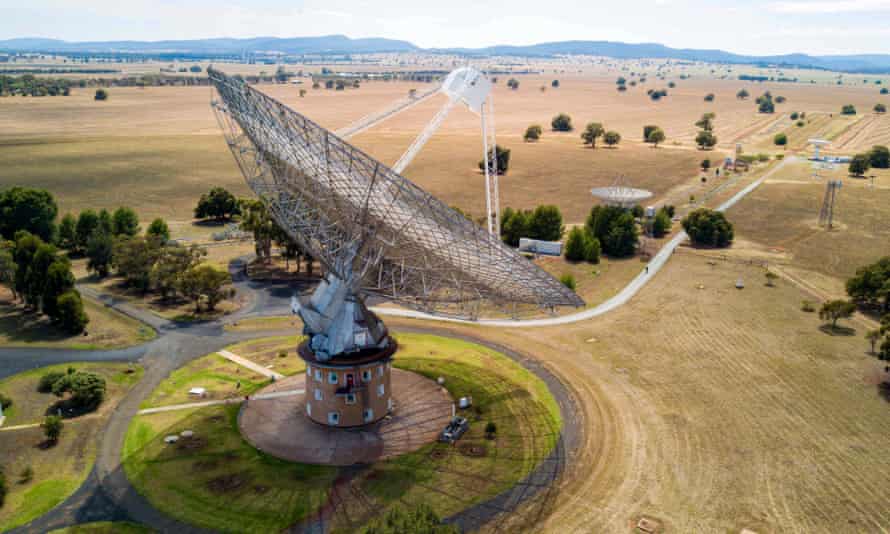The narrow beam of radio waves was picked up during 30 hours of observations by the Parkes telescope in Australia in April and May last year. Analysis of the beam has been under way for some time and scientists have yet to identify a terrestrial culprit such as ground-based equipment or a passing satellite.
It is usual for astronomers on the $100m (£70m) Breakthrough Listen project to spot strange blasts of radio waves with the Parkes telescope or the Green Bank Observatory in West Virginia, but all so far have been attributed to human-made interference or natural sources.
The latest “signal” is likely to have a mundane explanation too, but the direction of the narrow beam, around 980MHz, and an apparent shift in its frequency said to be consistent with the movement of a planet have added to the tantalising nature of the finding. Scientists are now preparing a paper on the beam, named BLC1, for Breakthrough Listen, the project to search for evidence of life in space, the Guardian understands.
The beam that appears to have come from the direction of Proxima Centauri, a red dwarf star 4.2 light years from Earth, has not been spotted since the initial observation, according to an individual in the astronomy community who requested anonymity because the work is ongoing. “It is the first serious candidate since the ‘Wow! signal’,” they said.
The “Wow! signal” was a short-lived narrowband radio signal picked up during a search for extraterrestrial intelligence, or Seti, by the Big Ear Radio Observatory in Ohio in 1977. The unusual signal, which gained its name after astronomer Jerry Ehman wrote “Wow!” next to the data, unleashed a wave of excitement, though Ehman cautioned about drawing “vast conclusions from half-vast data”.
Though too faint to be seen with the naked eye, Proxima Centauri has come under intense scrutiny from astronomers. At least two planets are known to orbit the star. One is a gas giant and the other is believed to be a rocky world about 17% more massive than Earth. Known as Proxima b, the planet circles its star every 11 days and lies in the so-called “habitable zone”, where the temperature is right for water to flow and pool.
But that does not mean water is present on Proxima b. Despite its apparently cosy location, the planet may well be hostile to life. In 2017, Nasa scientists used computer models to show that if Proxima b had an Earth-like atmosphere, it could easily be stripped away by the intense radiation and solar flares unleashed by its parent star. Under this battering, the 4bn-year-old planet could have lost its entire atmosphere in 100m years.

No comments:
Post a Comment